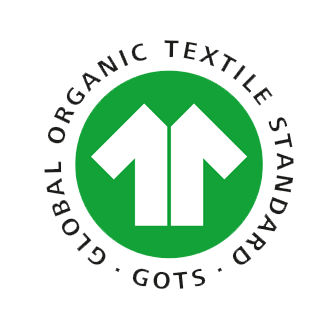The landscape of U.S. clothing manufacturing has changed dramatically over the past few decades. While the majority of clothing sold in the U.S. is still manufactured overseas, there is a growing movement towards supporting domestic manufacturers. This article explores the current percentage of clothing made in the U.S., the reasons behind the decline in domestic manufacturing, and the benefits and challenges associated with U.S.-made clothing.
U.S. clothing manufacturing has significantly declined over the years, but a renewed focus on domestic production1 is emerging, driven by changing consumer preferences, technology, and sustainability concerns.
Let’s explore the current state of U.S. clothing manufacturing, the factors influencing its decline, and the growing trend toward supporting U.S. manufacturers.
How Much of the Clothing Sold in the U.S. Is Made Domestically?
The U.S. clothing market remains heavily dependent on imports, but there are signs of change. Understanding how much of the clothing sold in the U.S. is made domestically is important to grasp the evolving trends in manufacturing and consumer preferences.
Although domestic clothing production has decreased over time, a small but growing segment of the U.S. clothing market is focused on locally made apparel2.
 Fashion designer reviewing sketches and designs.
Current domestic clothing production statistics:
Fashion designer reviewing sketches and designs.
Current domestic clothing production statistics:
| Category | Percentage of U.S. Clothing Made Domestically | Trends Driving Domestic Production |
|---|---|---|
| Overall U.S. Clothing | 2-3% | Rising demand for sustainable and ethically produced clothing. |
| Textile and Fabric Production | 3-5% | Increased focus on quality and unique fabrics. |
| Specialty Apparel (e.g., denim, outdoor gear) | 10-20% | Niche markets focusing on high-quality, durable goods. |
What Percentage of Clothing Is Still Manufactured in the United States Today?
As of the most recent estimates, about 2-3% of clothing sold in the U.S. is made domestically.
While the number is small, there is a growing interest in supporting U.S. manufacturers, particularly in niche markets such as premium denim, activewear, and sustainably made products.

How Has Domestic Clothing Production Declined Over the Past Decades?
Domestic clothing production in the U.S. has sharply declined since the mid-20th century, primarily due to the rise of cheaper labor overseas.
From the 1960s through the 1990s, many clothing companies moved their production to countries in Asia, where labor and production costs were much lower. This shift significantly impacted U.S. jobs in the textile and garment industries.
| Decade | Domestic Manufacturing Share of U.S. Market | Key Influences on Decline |
|---|---|---|
| 1950s-1960s | 95% of U.S. clothing was made domestically | The U.S. had a booming textile and garment industry. |
| 1970s-1980s | 70-80% of clothing was made domestically | The rise of offshore production begins, with manufacturers seeking cheaper labor. |
| 1990s-Present | 2-3% of clothing is made domestically | Globalization, cost-cutting, and the relocation of factories to countries with lower labor costs. |
Why Is U.S. Clothing Manufacturing Declining?
The decline of U.S. clothing manufacturing can be attributed to several factors, including economic conditions, changes in trade policies, and the rise of globalization.
The shift towards offshore production has been primarily driven by the pursuit of lower costs and larger production capacities. However, changes in global trade and shifting consumer preferences3 may influence future trends in domestic manufacturing.
Factors contributing to the decline in U.S. manufacturing:
| Factor | Description | Impact on U.S. Manufacturing |
|---|---|---|
| Economic Factors | The U.S. faces higher labor and production costs than many developing countries | Many U.S. companies outsourced production to save on costs. |
| Globalization | Trade agreements allowed for cheaper imports from countries with low labor costs | The global supply chain has led to U.S. manufacturers losing out to cheaper alternatives. |
| Automation and Technology | Technological advancements in overseas factories helped increase efficiency | Reduced the need for U.S. labor, making offshore production even more cost-effective. |
What Are the Economic Factors Affecting United States Clothing Manufacturers?
Economic factors, including high labor costs and the lack of economies of scale in the U.S., make it challenging for domestic manufacturers to compete with overseas production.
Additionally, many U.S. companies prioritize low production costs, which has led them to outsource manufacturing to countries with cheaper labor, such as China and Vietnam.
| Economic Factor | Impact on U.S. Clothing Manufacturing | Potential Solutions |
|---|---|---|
| High Labor Costs | Labor in the U.S. is more expensive than in many other countries | Domestic manufacturers may need to focus on high-quality, niche products that justify the higher costs. |
| Lack of Economies of Scale | Smaller factories in the U.S. struggle to compete with larger, more cost-efficient overseas operations | Automation, new technologies, and specialized production could help offset high costs. |
| Global Competition | U.S. manufacturers face stiff competition from low-cost suppliers in countries like Bangladesh and China | Focus on niche markets and differentiate through quality or sustainability. |
How Have Trade Policies and Globalization Impacted Domestic Production?
Global trade policies4, such as free trade agreements and tariff reductions, have encouraged U.S. companies to move production overseas where manufacturing is cheaper.
These policies made it easier for U.S. brands to import cheap goods, but they have also contributed to the decline of domestic manufacturing.
| Trade Policy | Description | Impact on U.S. Manufacturing |
|---|---|---|
| Free Trade Agreements (FTA) | Agreements such as NAFTA and WTO led to lower tariffs on imports from overseas | Encouraged outsourcing of production to countries with lower labor costs. |
| Tariff Policy | Increased tariffs on certain countries like China can affect cost structures | Tariffs can encourage companies to consider reshoring or nearshoring their production. |
What Are the Benefits of Supporting United States Clothing Manufacturers?
Supporting U.S.-based clothing manufacturers offers several advantages, both economically and socially. With growing concerns about sustainability, ethical labor practices, and fast fashion, more consumers and companies are turning to domestic production.
The benefits of domestic manufacturing go beyond supporting the economy—they also include reduced environmental impact, faster delivery times, and higher product quality.
Benefits of supporting U.S. clothing manufacturers:
| Benefit | Description | Why It Matters |
|---|---|---|
| Job Creation | Domestic manufacturing creates jobs in the U.S. economy | Stimulates local economies by creating stable, well-paying jobs. |
| Economic Growth | Supporting U.S. manufacturers strengthens the economy | Helps reduce trade deficits and boosts local industries. |
| Faster Lead Times | Local production reduces shipping times and costs | Allows for quicker turnaround times and reduces the dependency on overseas suppliers. |
How Does Domestic Production Contribute to Job Creation and Economic Growth?
Domestic production contributes to job creation in sectors like textiles, design, marketing, and logistics.
By sourcing products locally, companies help stimulate local economies and contribute to the growth of manufacturing industries in the U.S.
| Economic Contribution | Description | Impact on the U.S. Economy |
|---|---|---|
| Job Creation | The clothing industry supports thousands of jobs nationwide, from factory workers to designers | Strengthens local economies and reduces unemployment. |
| Wages and Benefits | Jobs in U.S. manufacturing tend to provide higher wages and benefits than in developing countries | Contributes to higher standards of living and improved workforce well-being. |
What Are the Environmental and Sustainability Benefits of Made in USA Clothing?
U.S. manufacturers tend to follow stricter environmental and labor regulations compared to overseas manufacturers.
By supporting domestic production, consumers can reduce their carbon footprint, support ethical labor practices5, and contribute to sustainability efforts.
| Sustainability Factor | Description | Why It Matters |
|---|---|---|
| Reduced Carbon Footprint | Local manufacturing reduces transportation emissions from overseas shipping | Helps combat climate change and reduces environmental impact. |
| Ethical Labor Practices | U.S. manufacturers adhere to strict labor laws, including fair wages and safe working conditions | Supports human rights and ensures fair treatment of workers. |
What Are the Challenges U.S. Manufacturers Face in Competing with Overseas Production?
U.S. manufacturers face significant challenges in competing with overseas production, particularly in countries with low labor costs. However, with the right strategies, these challenges can be overcome.
Despite these challenges, U.S. manufacturers are focusing on innovation, quality, and local production to remain competitive.
Key challenges U.S. manufacturers face:
| Challenge | Description | How to Overcome It |
|---|---|---|
| Labor Costs | Labor costs in the U.S. are higher than overseas | Focus on high-quality, low-volume production and innovation to offset costs. |
| Global Competition | Countries like China, India, and Vietnam offer much lower production costs | Differentiate by emphasizing quality, sustainability, and local sourcing. |
| Supply Chain Complexity | U.S. manufacturers rely on raw materials from overseas | Invest in local sourcing and technology to streamline the supply chain. |
How Do Labor and Production Costs Impact U.S. Clothing Manufacturing?
Labor and production costs in the U.S. are higher than in many overseas markets, which makes competing with low-cost producers challenging.
However, U.S. manufacturers can focus on producing high-quality, customized garments that justify the higher cost.
| Cost Factor | Impact on Manufacturing | How to Mitigate It |
|---|---|---|
| Higher Labor Costs | Increases the overall cost of production | Focus on automation and efficiency to reduce dependency on manual labor. |
| Material Costs | The cost of raw materials may be higher than in other countries | Invest in local sourcing to reduce material costs. |
What Are the Supply Chain and Logistic Issues for U.S. Manufacturers?
U.S. manufacturers often face supply chain and logistical issues related to sourcing raw materials, shipping, and storage.
By diversifying supply chains and using advanced technologies like automation, U.S. manufacturers can reduce costs and improve efficiency.
| Logistical Challenge | Description | Solution |
|---|---|---|
| Shipping Costs | Domestic manufacturing still faces higher logistics costs than overseas production | Invest in localized manufacturing and distribution to cut shipping expenses. |
| Supply Chain Delays | Sourcing materials from overseas can cause delays | Look for local suppliers and establish reliable partnerships. |
Can U.S. Clothing Manufacturers Compete with Low-Cost Overseas Production?
Despite the cost advantages of overseas production, U.S. manufacturers are finding ways to compete by focusing on quality, speed, and local sourcing.
The key to competing with low-cost overseas production lies in innovation, customization, and sustainability.
How U.S. manufacturers are adapting:
| Adaptation Strategy | Description | Potential Outcomes |
|---|---|---|
| Automation | Implementing new technologies to streamline production | Reduces labor costs and improves production efficiency. |
| Focus on Sustainability | Prioritizing eco-friendly practices and ethical production | Appeals to environmentally conscious consumers and improves brand image. |
| Smaller Production Runs | Specializing in smaller, custom runs instead of mass production | Allows U.S. manufacturers to meet niche market demands. |
How Are U.S. Manufacturers Adapting to Compete in a Globalized Market?
U.S. manufacturers are increasingly focusing on automation, technological innovation, and sustainability to compete in a globalized market.
By leveraging these strategies, U.S. manufacturers can create high-quality products and cater to consumers who value ethical practices.

Is There a Resurgence of Interest in Domestic Clothing Manufacturing?
There is a growing trend toward "Made in USA" clothing, driven by consumers’ demand for quality, sustainability, and ethical labor practices.
This resurgence is being fueled by innovations in manufacturing, a desire for quicker turnaround times, and a focus on local economic development.
Conclusion
While U.S. clothing manufacturing has significantly declined, there are signs of a resurgence, particularly in high-quality, small-batch production. By overcoming challenges related to labor costs, global competition, and logistical issues, U.S. manufacturers are adapting to meet the demands of modern consumers who value sustainability, ethical practices, and local production. As trends evolve, the future of U.S. clothing manufacturing may see more opportunities for domestic production to thrive.
-
Learn about the advantages of supporting domestic production, including economic and environmental impacts. ↩
-
Explore the growing interest in locally made apparel and its impact on the clothing industry. ↩
-
Discover how shifting consumer preferences are influencing the clothing industry and domestic production. ↩
-
Get insights into how trade policies influence domestic production and competition. ↩
-
Explore the importance of ethical labor practices in the U.S. clothing industry. ↩









